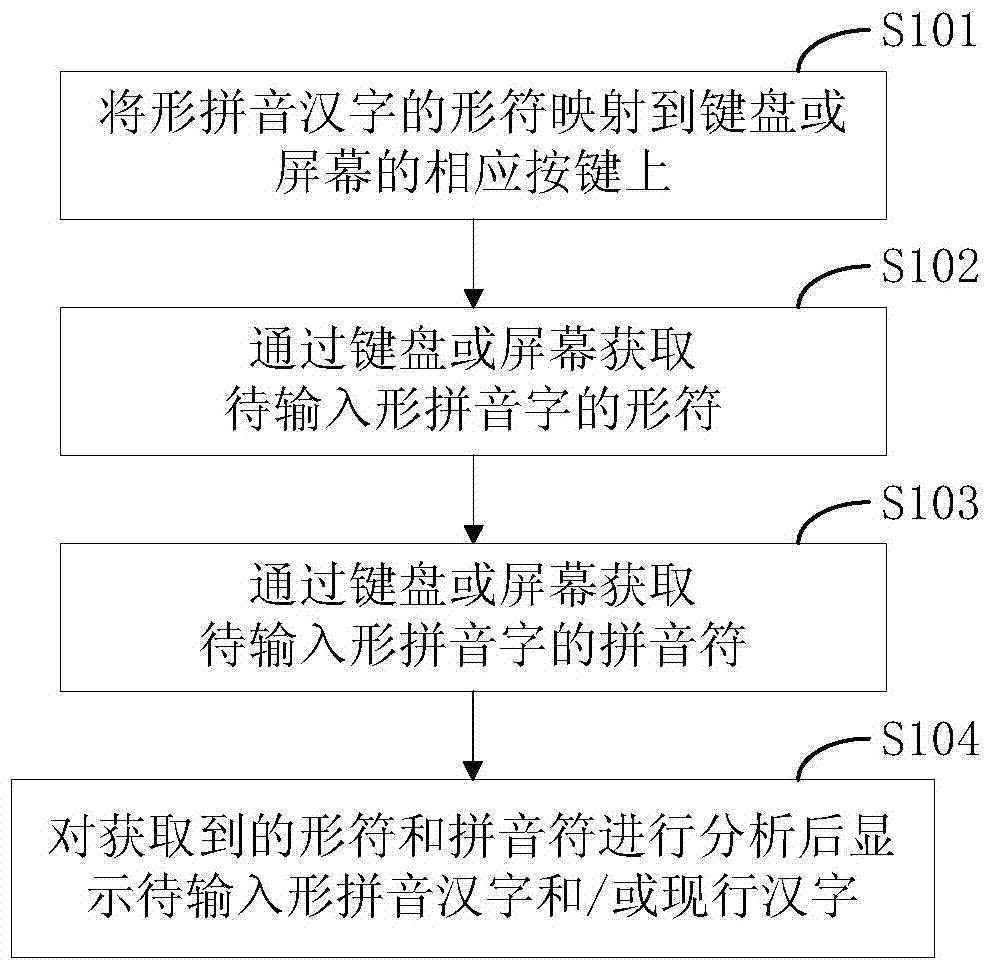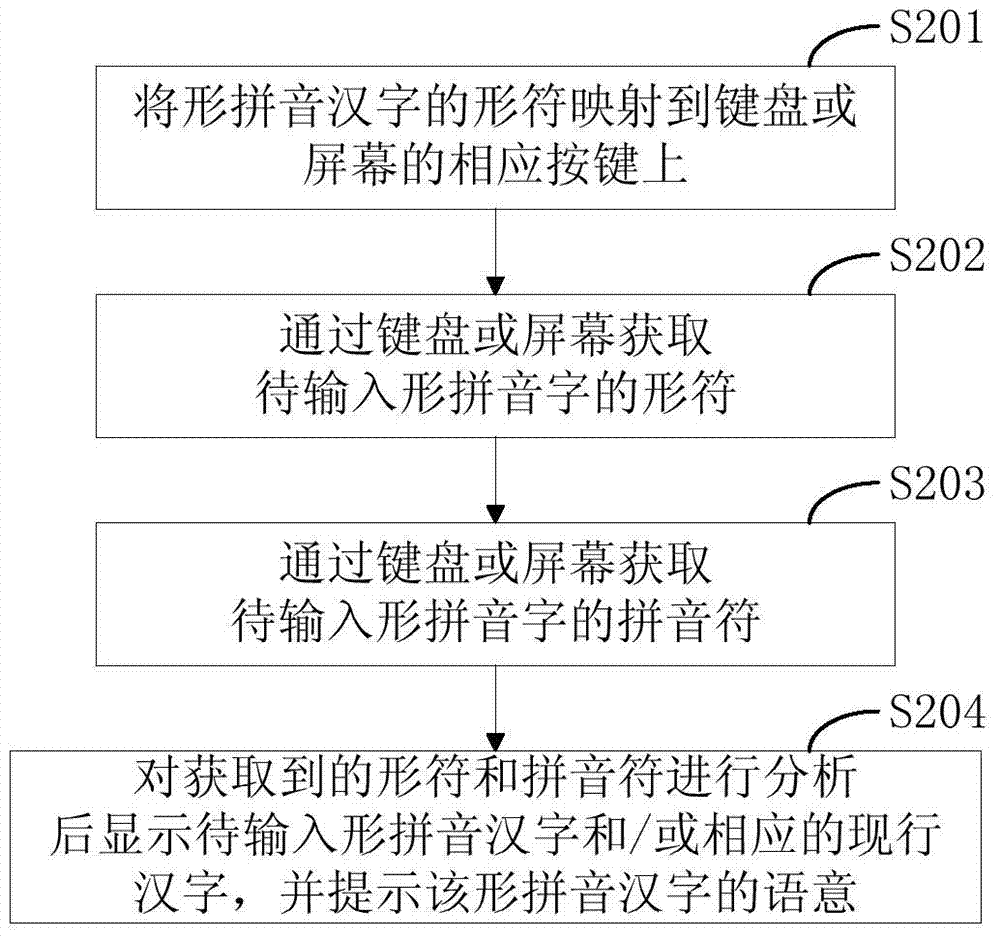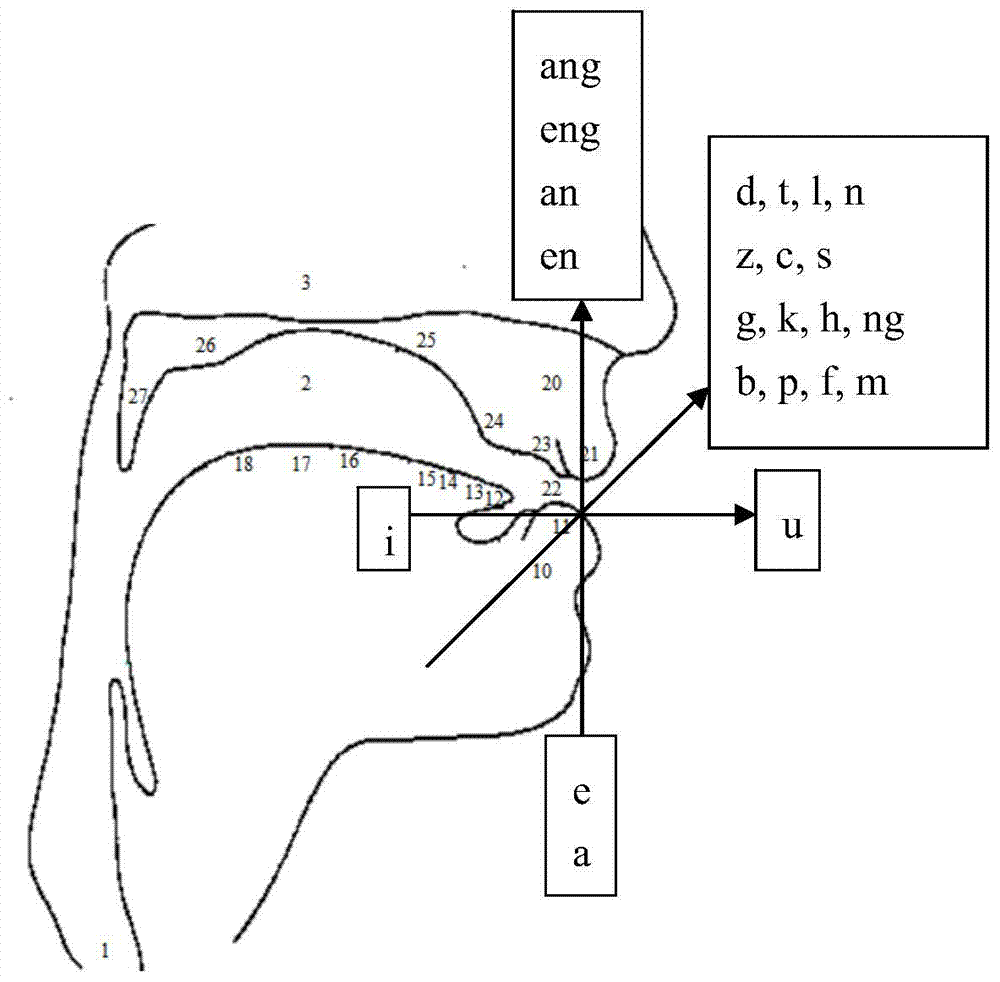Pinyin-form Chinese character input method
A technology of Chinese character input and pinyin, which is applied in the field of Chinese character input with phonetic phonetics, Chinese pinyin letters, and Chinese characters with phonetic phonetics.
- Summary
- Abstract
- Description
- Claims
- Application Information
AI Technical Summary
Problems solved by technology
Method used
Image
Examples
Embodiment 1
[0112] Chinese is a pictographic language, pictographic sound is the first great invention of Chinese culture, and Chinese characters are a system of symbols that record the meaning and pronunciation of Chinese. Although Chinese has now developed into standard Chinese (i.e. Putonghua, Mandarin or Mandarin), Chinese characters still use six ancient word-making methods: pictographic characters, Zhishi characters, knowing characters, phonetic characters, Zhuanzhu characters, and borrowed characters.
[0113] 1) Pictographs
[0114] The gesture pictograph method uses gestures to simulate the trajectory and shape of objects, so as to obtain pictographs that express things and their meanings. A pictographic character has only one pictograph, which expresses the meaning of the word, and each stroke is only connected with the meaning of the word, and has nothing to do with the sound of the word. For example: the character "日" is like the circle of the sun, and the middle point is lik...
Embodiment 2
[0200] In the process of inputting Chinese characters, users usually make input errors. The occurrence of input errors is partly due to errors when users input pictographs or pinyin symbols, and may also cause input errors due to ignorance of the meaning of the Chinese characters to be input. For the user, the former error can be avoided by carefully confirming the input pictograph or phonetic symbol in the input process. And for the latter kind of mistake, then need the user to carry out systematic study of Chinese character and just can reduce slowly. So it is very difficult to avoid the latter mistake.
[0201] In order to solve the above-mentioned problems, in this embodiment, while displaying the phonetic Chinese characters to be input, semantic prompts of the corresponding phonetic Chinese characters are also added. This can not only help users understand the meaning expressed by each phonetic character, but also effectively reduce input errors.
[0202] figure 2 It...
Embodiment 3
[0215] In this embodiment, the input process and principle of Xingpinyin Chinese characters are the same as those in Embodiment 2. But in the present embodiment, by the research and analysis of Chinese phonetic principle and Chinese character creation principle, proposed a kind of new Chinese phonetic phonetic alphabet, and utilize the Chinese phonetic phonetic letter that proposes to form the pinyin of phonetic Chinese character symbol.
[0216] The world is composed of various objects, objects are in motion, and motion is the relative motion of moving objects in the reference object space. The moving object has a certain position, trajectory and shape in the reference object space.
[0217] When people feel the movement of objects, they rely on the eyes, ears, nose, tongue and body to obtain vision, hearing, smell, taste and touch, so as to obtain information such as light, sound, smell, taste, temperature and hardness. The visual information of the eyes is the most import...
PUM
 Login to View More
Login to View More Abstract
Description
Claims
Application Information
 Login to View More
Login to View More - R&D
- Intellectual Property
- Life Sciences
- Materials
- Tech Scout
- Unparalleled Data Quality
- Higher Quality Content
- 60% Fewer Hallucinations
Browse by: Latest US Patents, China's latest patents, Technical Efficacy Thesaurus, Application Domain, Technology Topic, Popular Technical Reports.
© 2025 PatSnap. All rights reserved.Legal|Privacy policy|Modern Slavery Act Transparency Statement|Sitemap|About US| Contact US: help@patsnap.com



